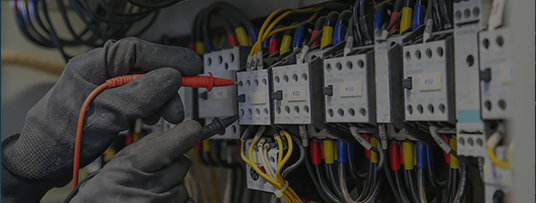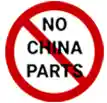Posted on July 26, 2024 frank botman Aerospace
Aircraft construction is a fascinating blend of advanced engineering, precision, and innovation, this complex process involving the assembly of various critical components to create machines that can safely and efficiently transport passengers and cargo across the globe. From the robust fuselage to sophisticated avionics systems, each element plays a vital role in an airplane's performance, safety, and reliability. Read on as we delve into the key components and construction processes that form the backbone of modern aircraft.
The fuselage is the main body of an aircraft and is essentially the central structure to which all other components are attached. It is designed to be aerodynamic to reduce drag and improve fuel efficiency, while also being constructed to house the passenger cabin, cargo hold, and sometimes, fuel tanks depending on the aircraft model.
As arguably the most iconic aspect of an aircraft, the wings attached to the fuselage are responsible for generating lift, which allows the plane to ascend and stay aloft. The aerodynamic design of the wings serves to minimize drag and enhance an aircraft's overall efficiency, with the wing structure comprising spars, ribs, and skin that provide the necessary strength and flexibility. Additionally, wings often house fuel tanks, and on some aircraft, they even contain landing gear mechanisms.
The tail section of an aircraft, also known as the empennage, includes the horizontal and vertical stabilizers. These components are essential for maintaining stability and control during flight, both having distinct roles. The horizontal stabilizer provides pitch control, while the vertical stabilizer controls yaw. Moreover, the empennage is also where flight control surfaces like the elevators and rudder are located to further assist in maneuvering an aircraft.
Aircraft engines are the powerhouse of a plane, providing the necessary thrust to propel it forward. There are a few types of engines, but modern planes most often use jet engines, which are highly efficient and powerful as compared to more conventional options. The engines are attached to either the wings or fuselage with robust mounts and high-strength fasteners that are made to absorb vibrations and stresses. Engine construction also requires advanced materials like titanium and heat-resistant alloys to withstand the high temperatures and stresses encountered during operation.
As the final aspect of an aircraft we will touch on, the avionics and electronic systems are what contribute to safe and efficient flight operations, comprising navigation, communication, and monitoring devices. These systems rely on sophisticated software and hardware to provide real-time data to pilots and ground control, ensuring that an aircraft can navigate complex airspaces and respond to changing conditions efficiently. Avionics systems are housed within the cockpit and other internal areas, connected through a network of sensors and switches to seamlessly function together. Advanced avionics also help with automatic pilot functions, weather radar, and collision avoidance systems, significantly enhancing flight safety.
The construction of any aircraft involves diligent planning and precision engineering to meet all objectives. Every part, from the wings to the avionics, is designed to meet stringent safety and performance standards. Moreover, each component undergoes rigorous testing to ensure it can withstand the stresses of flight. Engineers and manufacturers use a variety of materials in the construction of aircraft parts, such as aluminum alloys, composites, and titanium, to offer an ideal balance of strength and weight. This intricate dance of design, testing, and assembly results in aircraft that can operate reliably under a wide range of conditions.
The construction process most often begins with detailed engineering designs and blueprints, which guide the manufacturing of individual components. These parts are then fabricated using advanced techniques such as precision machining, 3D printing, and composite layup processes. Once components are manufactured, they undergo meticulous inspections and quality control checks to confirm that they meet any required specifications.
Fasteners like rivets, bolts, and screws are also essential in the assembly process, their primary function being to securely attach the various components and structures of an aircraft together. Additionally, bearings are used in moving parts to reduce friction and wear, therefore extending their operational lifespan. As with any other parts, all fasteners and bearings must be manufactured in line with strict quality standards and undergo extensive testing to verify fit, form, and function.
Assembly takes place in specialized facilities where teams of skilled technicians and engineers work together to fit and secure each part. This phase demands strict attention to detail, as even minor deviations can impact an aircraft's performance and safety. Computer-aided design (CAD) and manufacturing (CAM) tools are often used as reference during construction to achieve the precise alignment and fitting necessary for optimal functionality.
After assembly, aircraft undergo extensive testing, including ground tests and flight tests that validate their capabilities under various conditions. These tests simulate circumstances such as extreme weather and emergency situations, ensuring that the aircraft being evaluated can operate safely and reliably in nearly any scenario.
In conclusion, aircraft construction is a testament to human ingenuity and technological advancement. From the sturdy fuselage to sophisticated avionics, each component is thoroughly designed, tested, and assembled to the highest standards in order to create marvels of modern aviation. Understanding the anatomy of an aircraft and the processes involved in its construction provides a deeper appreciation of the engineering feats that make air travel possible.
When you require high-quality aircraft parts, there is no better procurement platform than Find Automation Parts. On this website, we have organized countless catalogs and a robust search engine so you can easily locate the exact components you want out of our extensive inventory of over 2 billion items. If you come across anything of interest, our online RFQ forms are there for you to utilize and request quotes for your comparisons, tailored responses being provided by our team within 15 minutes of our review. We always strive to offer competitive pricing and lead times for every product we carry, so explore our inventory and get in touch with our team at your convenience to see how we can accommodate all of your operational needs.

 The only independent
The only independent

 All Orders are Fulfilled in the U.S.A.
All Orders are Fulfilled in the U.S.A. All shipments must comply with U.S.A export laws.
All shipments must comply with U.S.A export laws. No exceptions.
No exceptions.

“We Proudly Support Intrepid Fallen Heroes Fund that serves United States Military Personal experiencing the Invisible Wounds of War : Traumatic Brain Injury (TBI) and Post Traumatic Stress (PTS). Please visit website (www.fallenheroesfund.org) and help in their valiant effort”.
We hope that you will visit us again the next time you need industrial parts and make us your strategic purchasing partner.
Request for Quote